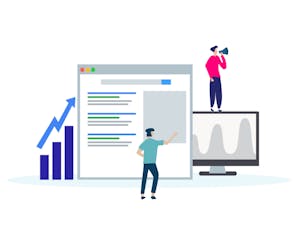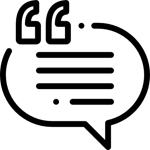- Content Marketing
- SEO
Beginner,
Intermediate
Get a behind-the-scenes-look into FareHarbor's 2024 season

Writing killer content is one of the most important parts of digital marketing, and it’s a great tool to rank organically in search engines and to establish you as an industry expert. Getting started with writing content can be a little intimidating, but as a tour or activity operator, who better than you to tell your customers about your industry and your city?
This guide walks you through what defines quality content in terms of digital marketing and SEO, the different types of content pages you can create on your site, and eight actionable tips for creating stellar content that both your readers and the search engines will love!
Quality content performs a variety of functions, from creating brand awareness and loyalty to driving social engagement and bookings. So what makes great online content stand out from the crowd?
Good content is more than a self-promotional tool. The best content (and the content that ranks well) is that which provides valuable information to your reader and meets their search intent. As a leader in your industry, you have the knowledge that your customers want. For example, if you offer a wildlife walking tour in Maui, you could write an article titled “A Guide to Maui’s Wildlife” that provides readers with valuable information on the topic. At the same time, this article also increases your opportunity to be discovered online by people who want to know more about your area of expertise.
In order for content to rank well in search engines, it needs to include specific keywords and phrases that people use in their search queries. By finding some long-tail keywords related to your industry (more on that in a moment), you can craft the perfect piece of content that benefits both you and your readers. Make sure you’re thinking about the search intent behind the keywords to give your content a better chance of ranking.
Most people’s attention is fleeting, especially when reading on a screen. If you want to keep readers on your page and you want them to share your content on social media or engage in a discussion, it has to be interesting! Don’t stuff your content full of fluff — provide valuable information in a way that is easy to consume. Think about the kind of content you are most likely to read all the way through or to share with your friends or family, and write with that goal in mind.
Search engines like Google understand what type of content readers want and, perhaps more importantly, what they don’t want. If your content lacks substance, doesn’t satisfy the search intent behind the keywords you’re targeting, or is low on word count, then it’s not likely to rank well (and readers are not likely to engage with it). Make sure you’re providing valuable insights within your content.
While you want to pay attention to content on every single page of your site, there are a few types of content that are sure to bring a lot of value to your business. Whether you’re publishing a blog, adding content to an information page on your site, or launching a marketing campaign, here are three types of content to keep in mind.
 Help Content
Help ContentHelp content — also referred to as hygiene content by Google — is all about informing readers rather than being self-promotional. This content should focus on the information about your industry or city your audience is actively searching for. This type of content engages your audience and helps you build a follower base, and it can include things like tutorials, how-tos, reviews, and more.
Help content should be aimed at a wide audience that may or may not know about your company. To create the best help content, find out what informational content about your industry is missing online and fill that gap by providing well-researched, SEO-optimized content.
 Hub Content
Hub ContentHub content is catered to your existing customers. This content is for people who already know about your brand, but it should still provide value to your readers and not just be centered around self-promotion. Customer testimonials or anecdotal stories about your tours or activities work well as hub content, as long as they provide useful information about your industry or area.
 Hero Content
Hero ContentHero content is all about going BIG. This is the content you turn to when you want to create a major digital marketing initiative, such a promoting an event or announcing a new location or new activities.
If you have an advertising budget, hero content is one of the places you want to spend it to make sure the content is professionally produced and you can push it across a variety of channels to reach a wide audience. Hero content goes beyond plain text copy and can take a variety of shapes — such as social media campaigns, video series, email marketing, and more. This is an opportunity to be creative, generate awareness, have a high impact, and ultimately attract new customers to your business.
Follow these eight tips to make sure you’re putting out the best possible content that will both engage your readers and rank well in search engines.
Search engines and readers alike want content that contains valuable information. Even if you’re an absolute expert on the topic you’re writing about, it’s a good idea to do some research and read similar content out there to see what is ranking well and how those pages are formatted. Make sure to cite any resources or studies that you use in your writing.
You want your content to be educational, and research will help you ensure you’re including all the relevant information your readers want on your page or blog post. It’s a good idea to follow other sites in your industry to get an idea of what they’re writing about, and then you can write a post that’s even better!
Long-tail keywords are the long (three or four words at least), specific queries that drive more targeted traffic to your site. These are typically lower in search volume but tend to lead to higher conversions because they are used by searchers who know exactly what they’re looking for. Check out our guide to keywords to discover some helpful (and free!) tools for finding the right keywords for you.
Using long-tail keywords on your site’s blog or information pages helps you rank for more specific terms without competing with the activity pages on your own site, where you might use broader keywords with a higher search volume. When you find a long-tail keyword that you know you can write some valuable content around, create a new information page or blog post that provides relevant, useful content on that topic.
For example, if you provide tours on Oahu, a good long-tail keyword to target could be “best photography spots on Oahu.” With your expertise, you can easily write a blog post on this topic, then link to one of your tours or activities that takes visitors to some of the sites on your list. Just make sure your content matches the search intent (for example, if you’re using the keyword “best” or “top,” make sure the post is a list of top sites) to satisfy both readers and search engines.
Every good piece of content answers the five Ws: Who, What, When, Where, Why (plus the bonus, How). These are the basic questions we think of when gathering any type of information. If you answer all of these questions as you’re writing, you’re well on your way to creating in-depth, quality content.
For example, if you’re writing a how-to guide for preparing for a kayaking trip, you want to address:
Audiences won’t ever read your content if you don’t first entice them with a killer headline. According to Copyblogger, 80% of people will read your headline, but only 20% will read your content. That’s because readers only click on the headlines that promise to solve their problems or answer their questions.
Spend some time thinking about your headline. Don’t just throw it together before you start writing and forget about it. Write out a list of options, then choose the one you like best! You can always share some options with your coworkers to get their opinion on which one intrigues them the most.
Consider the following to help ensure your headline works for you, not against you:
 Pro tip: Keep your headline under 8 – 10 words. You can always use a subheading to add a little additional information and tease the solution your content will provide.
Pro tip: Keep your headline under 8 – 10 words. You can always use a subheading to add a little additional information and tease the solution your content will provide.
Chances are you aren’t the only business in your niche, and most of your competitors are also striving for a top spot in search engines — but you have a unique point of view based on your background and expertise, so bring that to your content! By sharing anecdotes and personal experiences, you can make your content stand out from the rest.
Sure, anyone can write that there are dolphins in your area, but as a tour or activity operator, you know the best times to see them, the most respectful way to approach them, and you probably have great stories about your encounters. Bring your perspective into your writing to connect with readers and get them excited about what your company has to offer.
People want to know that there are humans behind the content they’re reading. By infusing your personality into your writing, you can engage your readers and let them know that you and your business are personable, trustworthy, and experienced.
While writing is at the heart of your content, use other media to make your content more engaging and robust. If you’re writing a guide to street art in your city, include plenty of high-quality photos. If you have video equipment, get a video of a trip down the river where you offer kayaking tours to get readers excited. If you have a data-heavy post, use infographics to visualize the information.
Visual content tends to get more shares and engagement on social media, so if that’s your goal, be sure to include plenty of photos, gifs, charts, or any other visuals that can help bring your content to life. If you don’t have a designer on your crew, don’t worry! There are plenty of free tools out there you can use to create infographics and more.
After all the hard work you’ve put into crafting your content, don’t let typos or misspellings deter from its value. Make sure you reread your work a few times before publishing it and double-check your grammar and spelling to ensure your content looks polished and professional.
Rewriting is one of the most important parts of writing. This is when you make your work come alive by rephrasing and reorganizing until it sounds just right. It’s always a good idea to read your content aloud so you can spot anything that sounds awkward or repetitive.
 Pro tip: Download a free grammar tool like Grammarly Writing Assistant to check for any errors!
Pro tip: Download a free grammar tool like Grammarly Writing Assistant to check for any errors!
While you want to keep readers on your page as long as possible, links serve a valuable purpose. You can use them to lead readers to another page on your site or to link to an outside source that provides more information on the topic. There are two types of links:
External links show search engines that you’re “honest” by not only linking within your own site to promote your tours and activities, and they can encourage other sites to link to your content too. When linking to an external site, make sure it’s credible and trustworthy, and set the link to open in another tab or window so readers don’t have to leave your site.
Now that you know what it takes to create awesome content that your readers and search engines will love, it’s time to start writing! Brainstorm some topic ideas and start working on some great blog posts or information pages on your site. If you’re interested in starting a blog (which we highly recommend!), check out our guide to blogging best practices.